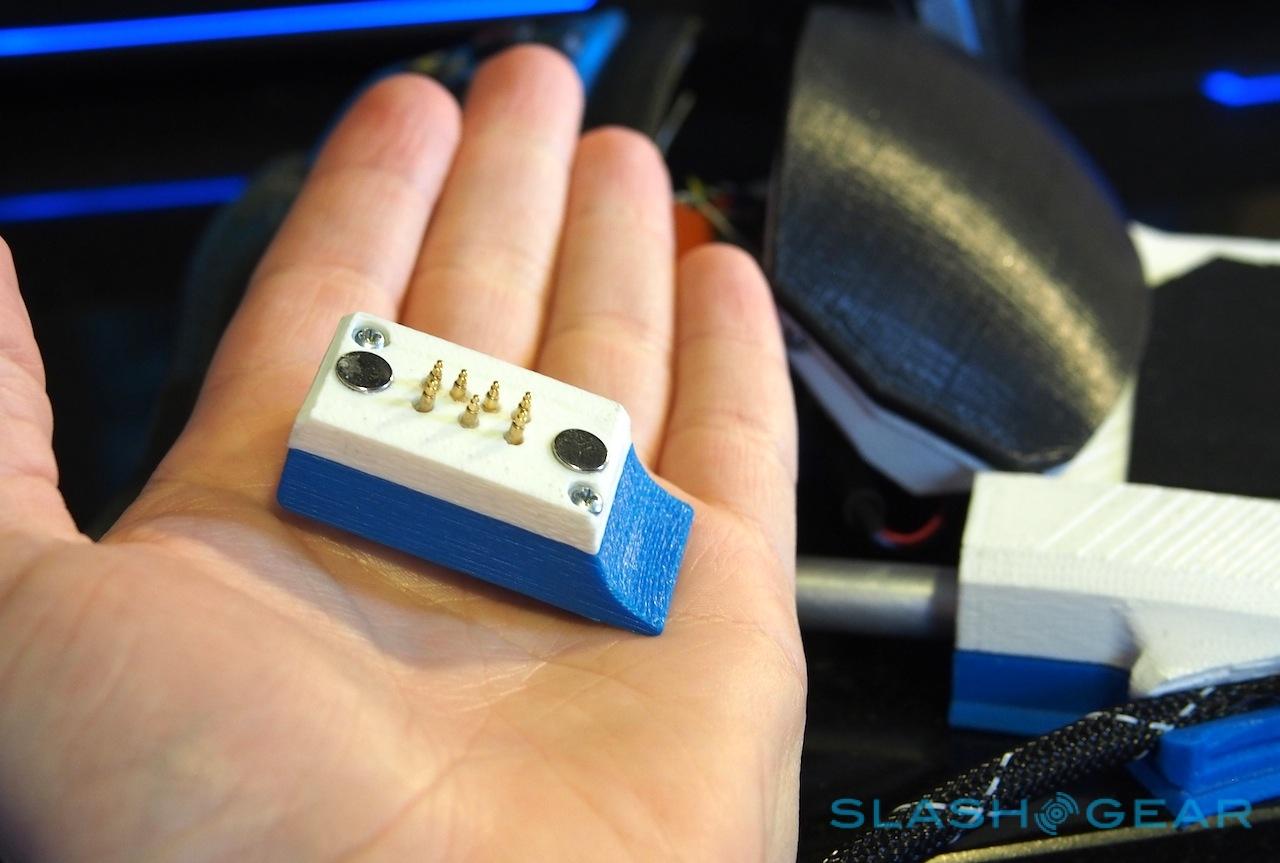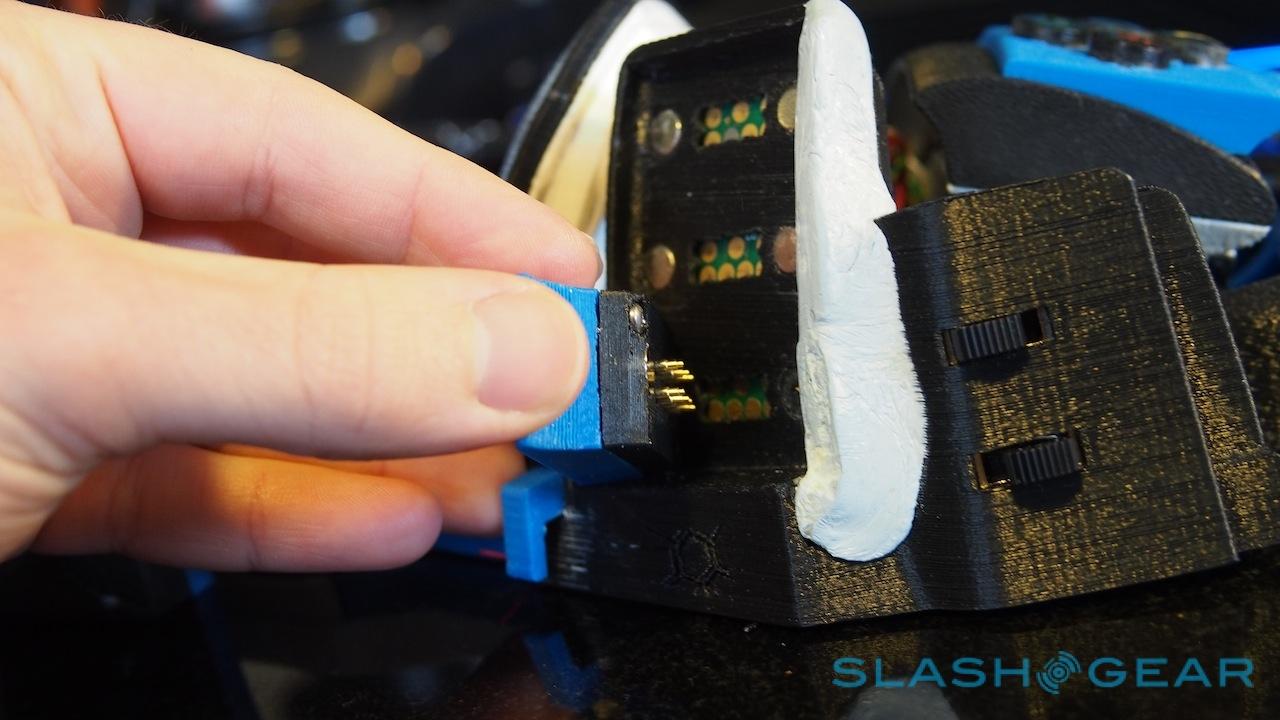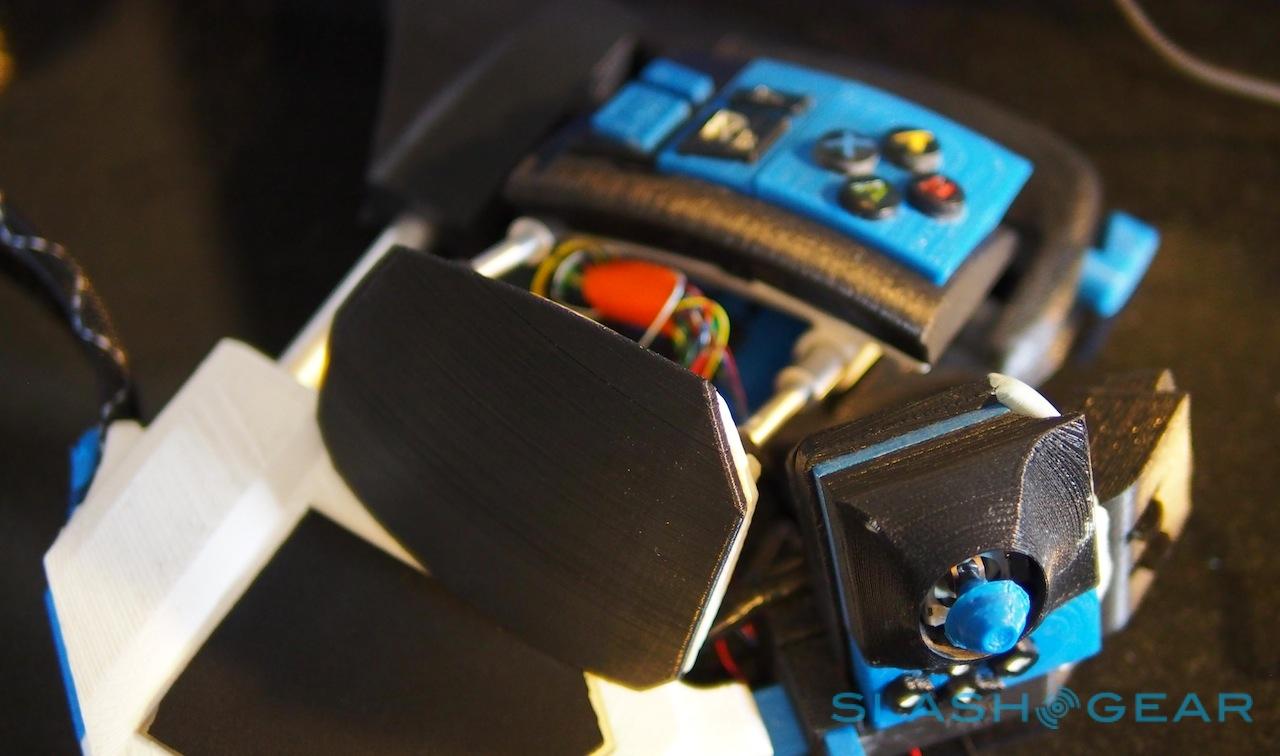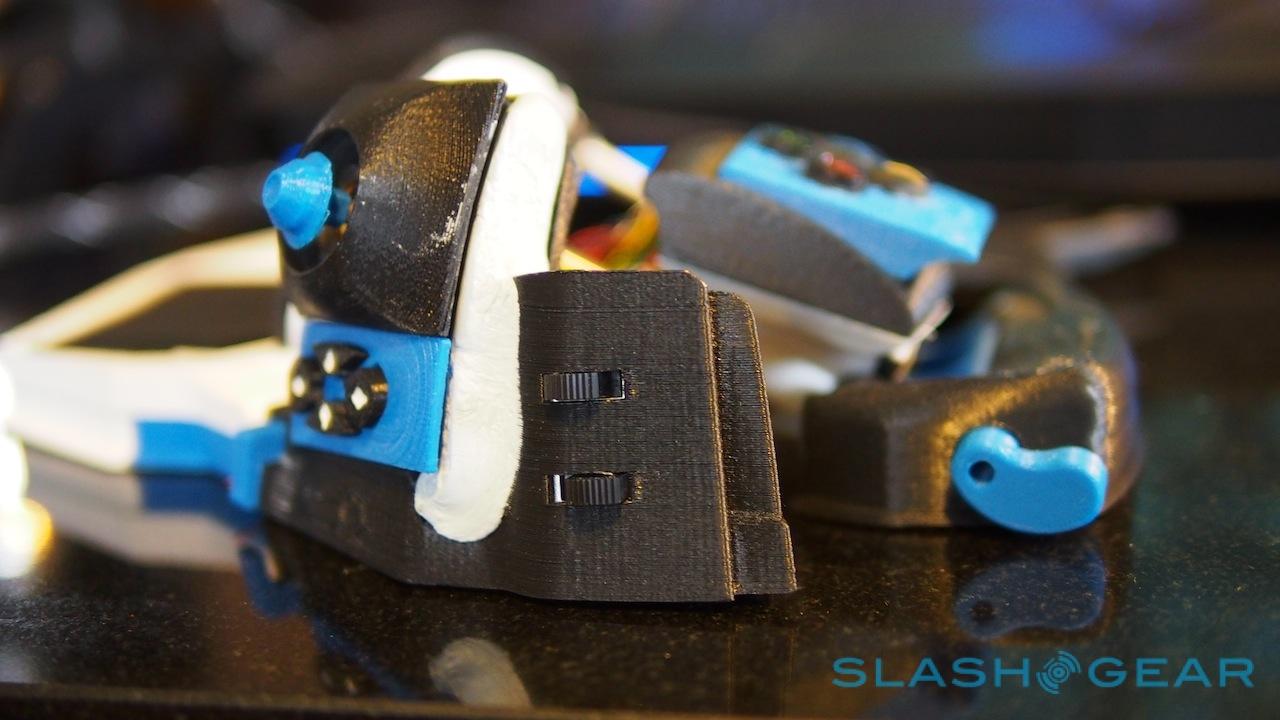Tivitas Sinister Modular Gamepad Working-Proto Hands-On
It looks like a 3D-printed mousetrap, or maybe some sort of torturous orthopedic device for your hand; in actual fact it's what startup Tivitas believes will pave the way for console gamers to move over to the PC. Dubbed Sinister, we'd spent some hands-on time with a non-functional prototype back at CES, but the team invited us back to play with a functional version ahead of its Kickstarter campaign launch next week. Aiming not only for $100,000 but to bring haptics back to PC gaming, it's an ambitious project, certainly; read on for our first impressions.
Tivitas was started in April 2013 by Chris Zhao-Holland, a console gamer frustrated by how difficult transitioning from an Xbox gamepad to a keyboard and mouse on a PC proved to be. The solution he came up with is Sinister, and the modular layout of its controls and the adjustability of its chassis were almost forced upon it, rather than being initially intentional: Tivitas wanted to accommodate those coming over from both Xbox and PlayStation, and was struggling to find a single layout that was comfortable for players of both.
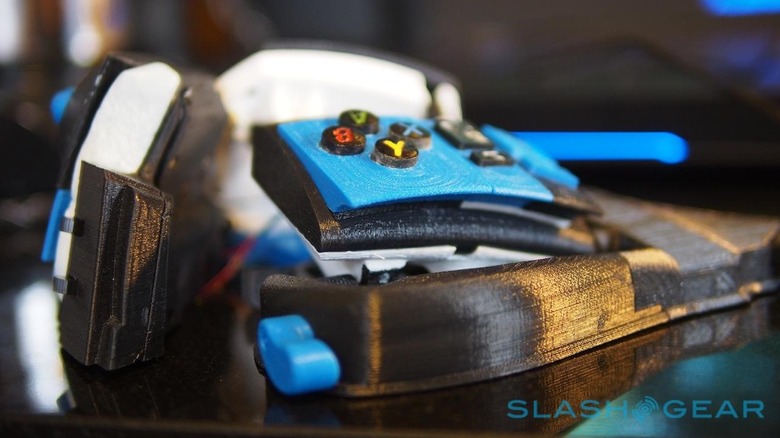
Like the non-functional prototype we played with earlier in the month, Tivitas' working Sinister hardware is the product of a 3D printer. It lends the hardware a raw look that's surprisingly appealing – in fact, one of the Kickstarter reward tiers will be a 3D printed version rather than the production frame – though it's still clearly a work-in-progress.
The button and control sections pull out readily from their magnetic notches when we pull at them, though Zhao-Holland has to fit them back in himself since the hardware is being temperamental with the spring-pin connections underneath. Meanwhile the adjustable arched-back – which can be flattened out until it's almost as level as a keyboard, or raised up to suit those who'd rather wrap their hand claw-like around it – is similarly tetchy at this point, though Sinister certainly looks impressive reared up with some of its guts exposed.
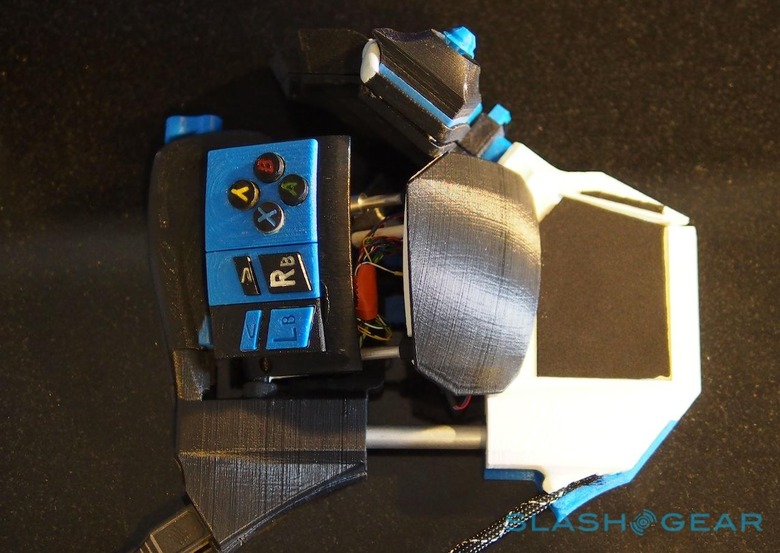
It's surprisingly difficult to get gaming hardware, PC games, and gamers themselves to work together properly. As well as the modular pieces – XYAB button pads, larger trigger-style keys, and analog sticks – there's working with whatever mouse the gamer prefers, whether it's a $100 Razer or a $10 no-brand that just so happens to fit their hand perfectly. Sinister has a simply USB connection to handle that, and can be switched between replicating a right analog stick with mouse movement or "shutting down" and simply passing through the regular mouse signals for standard app duty. There's also a hybrid mode for games like Crysis which use both a mouse for interface control and an analog stick for play.
Sinister's buttons will feel, effectively, just like a regular gamepad's keys, only with the added advantage that you can adjust their layout. That can even be done mid-game, so that if you decide you want to flip the left analog stick from under your thumb to your forefinger, you can do that without having to power down the PC or restart what you're playing.
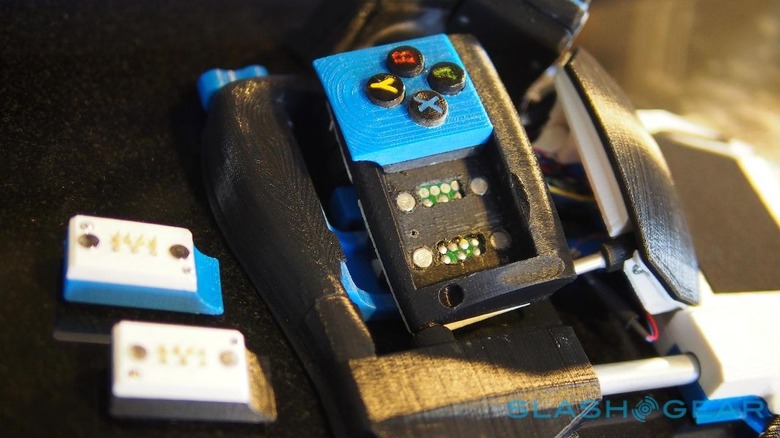
The haptics, though, should feel considerably better than what you'd get on a regular gamepad. Instead of the usual spinning motors, Tivitas has opted for "artificial muscles" from ViviTouch, which react far quicker and bypass the spin-up and spin-down delay of a normal system. Embedded in the palm-rest, the system promises to deliver every gunshot, every impact from a fall, and every buzz of the engine to your hand, in a far more immediate and precise way than usual.
Haptics have fallen from favor in PC gaming – you can find vibration feedback on joysticks, but they're generally only of use in flight-sims these days – but Zhao-Holland wants to change that. Branded RealityLink on Sinister, it'll work as normal with any haptic instructions included in a game, but Tivitas has also cooked up three special modes specifically designed to bring out the best in FPS, action, and RPG titles.
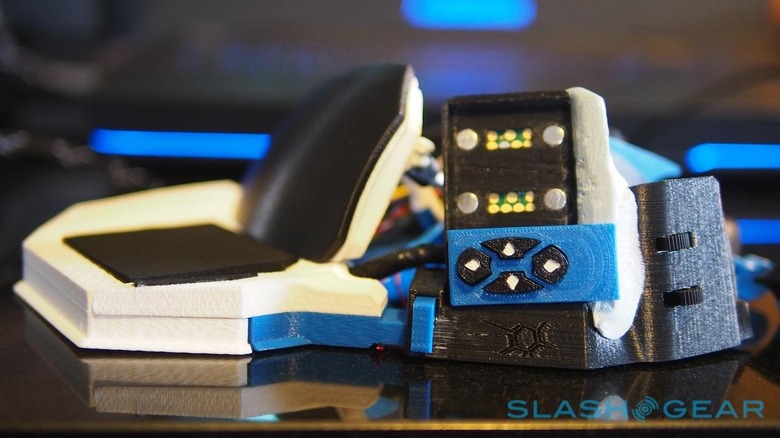
There'll also be an SDK which Tivitas hopes game developers take advantage of, customizing their haptic response to what ViviTouch-powered systems like Sinister are capable of. Gamers too will be able to adjust the degree of feedback delivered, depending on their own personal tastes.
In practice, it's still somewhat on the weak side; Zhao-Holland says that's going to be addressed very soon. Still, what's impressive is the degree of accuracy: gun recoils stab your palm with every shot, rather than just vibrating generally while the weapon fires, for instance.
That's not the only thing on Tivitas' to-do list. The modular touchscreen is on the roadmap but could be brought forward as a stretch-goal if enough backers are interested, bringing an extra degree of flexibility to Sinister. It's not the only screen being considered, too: right now there are a couple of switches on the side to flip between the different modes, but Zhao-Holland tells us that they might be replaced with a small LCD with all the settings available to tweak. Meanwhile, the controller will gain adjustable LED lighting as it heads to production.
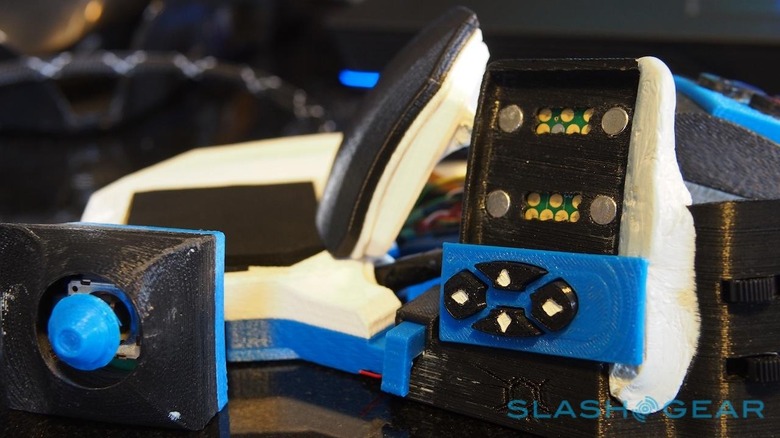
Tivitas has high hopes for the Kickstarter, which it's seeing as an opportunity to get more units in developers' hands and refine Sinister for the public launch, rather than recouping development costs. The cheapest backer tier with a Sinister reward will be $85 (though only 85 units will be offered at that price; then 100 at $100; and finally the regular $120 price) and they'll get developer hardware as of around June and hopefully give some feedback to the team as it works on a December launch for the consumer version.
There'll also be some neat extras only offered to Kickstarter backers, like a "retro controller" which will put a couple of the modular control blocks on a compact, retro-styled pad (they'll also work on the regular Sinister). Exactly how much each of those control blocks will cost isn't finalized, though Zhao-Holland told us that Tivitas is aiming for scale rather than outright profit.
As we've heard of late talking to developers of games like EverQuest, designing for one platform is short-sighted. Modern gamers increasingly expect to be able to jump between, and want to do so with the minimum of learning curve: right now, that's not something that could be said for going from console gamepad to PC keyboard and mouse. Tivitas is biting off a big challenge, but the gaming segment is still vast, and it may just take getting gamers' hands wrapped around Sinister's unusual form-factor to carve out a niche in the market.


